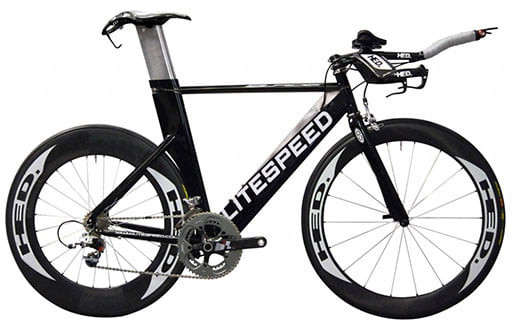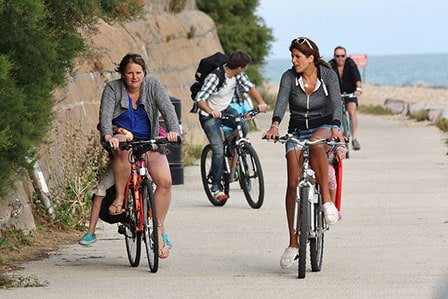Bike Insurance. Just the phrase might make your eyes glaze over. It’s not the most thrilling topic for cyclists, who’d rather be discussing gear, routes, or their latest ride. However, in a world where bike theft is rampant and accidents happen, understanding bike insurance is a crucial part of responsible bike ownership.
We all know that even the toughest bike locks can be defeated, and no bike is truly theft-proof. Statistics show a significant percentage of cyclists will experience bike theft at some point. This raises a vital question: Is taking out bike insurance a smart move to protect our investment and ourselves?
Like many, I initially found the world of insurance daunting. The jargon, the policies, the sheer thought of paying for something you hope you’ll never need – it’s easy to see why many cyclists avoid it. But, driven by the need to make an informed decision, I dove into researching bike insurance. This article is designed to share that knowledge in the simplest way possible, helping you understand your options and decide if bike insurance is right for you. Let’s break down the basics of bike insurance and explore whether it’s a worthwhile investment for cyclists.
Understanding Bike Insurance: The Basics
Let’s start with the fundamentals. What exactly is insurance? In essence, when you purchase insurance, you’re entering an agreement with a company. You pay a regular fee, known as a premium, in exchange for a promise. This promise is that if you experience a significant financial loss due to a covered event, the insurance company will compensate you for part or all of that loss.
Think of it as a safety net. You pay a relatively small amount regularly for the security of knowing you’re protected from potentially large financial burdens down the line. The specifics of what’s covered, what’s excluded, and the conditions under which the insurance company will pay out are all detailed in your insurance policy. Understanding your policy is key to knowing what protection you actually have.
What Can Bike Insurance Protect You From?
When it comes to bikes, the “larger financial losses” we’re concerned about typically fall into a few key categories:
- Theft: The cost of replacing your bike if it’s stolen.
- Damage: Repair costs if your bike is damaged in an accident or other covered event.
- Medical Expenses: Costs associated with injuries sustained in a cycling accident.
- Liability: Financial responsibility if you cause damage or injury to someone else while cycling.
Bike insurance policies are designed to address these risks. By paying your premium, you transfer some of the financial risk associated with these events to the insurance company. However, it’s crucial to remember the “devil is in the detail.” Insurance policies have conditions and exclusions that dictate when and how they will pay out. To make an informed decision about bike insurance, you need to understand these conditions and know exactly what you’re getting.
There are several distinct ways to insure your bike, each with varying levels of coverage and cost. Let’s explore these options, starting with the most basic and progressing to more comprehensive solutions.
Your Bike Insurance Options: Weighing the Choices
When considering bike insurance, cyclists have several avenues to explore. These range from forgoing insurance altogether to opting for specialized bike-specific policies. Let’s examine four primary options:
1. Self-Insurance: Going Without Coverage
The first, and default, option is self-insurance. This simply means choosing not to purchase any specific bike insurance policy. In this scenario, you are responsible for covering all costs associated with bike theft, damage, or injury out of your own pocket.
 Do we need bike insurance?
Do we need bike insurance?
Pros of Self-Insurance:
- No Premium Costs: The most obvious advantage is that it’s free – until something goes wrong. You don’t pay any monthly or annual premiums.
Cons of Self-Insurance:
- Potentially High Costs: If your bike is stolen or you’re involved in an accident, you bear the full financial burden. This can be particularly devastating if you own an expensive bike or incur significant medical bills.
- No Peace of Mind: Riding without insurance can lead to anxiety, especially if you worry about theft or accidents.
For cyclists with inexpensive bikes or those who are comfortable with the financial risk, self-insurance might seem acceptable. However, for those with valuable bikes or who want financial security in case of unforeseen events, it’s a risky approach.
One variation of self-insurance is to proactively save the amount you might spend on insurance premiums. By putting this money aside, you create a dedicated fund for bike replacement or repair. If nothing happens, you accumulate savings. However, this still requires financial discipline and immediate funds if an incident occurs before you’ve saved enough.
 A very expensive bike
A very expensive bike
2. Anti-Theft Protection from Lock Manufacturers
Some bike lock manufacturers, notably Kryptonite and OnGuard, offer anti-theft protection programs as a form of guarantee for their locks. This is often marketed as “insurance,” but it’s more accurately a limited form of theft compensation. These programs typically involve a small additional fee for several years of coverage.
How Anti-Theft Protection Works:
The premise is that if a thief defeats the lock (of a specified type and security level) and steals your bike, the lock manufacturer will provide a compensatory payment.
Pros of Anti-Theft Protection:
- Low Cost: These programs are relatively inexpensive, adding only a small amount to the lock purchase price.
Cons of Anti-Theft Protection:
- Difficult Claims Process: Claiming compensation can be challenging. Manufacturers often require the broken lock as evidence, which thieves may dispose of.
- Limited Coverage and Eligibility: Eligibility can be restricted based on location (e.g., excluding high-crime areas like New York City) and other conditions.
- Not Comprehensive Insurance: This is solely theft protection and doesn’t cover damage, accidents, or liability.
While anti-theft protection from lock manufacturers can offer a minimal layer of security at a low cost, it’s not a substitute for полноценная bike insurance. The claim process can be complex, coverage is limited to theft under specific circumstances, and it doesn’t address other cycling risks.
3. Leveraging Homeowners, Renters, or Auto Insurance
Many people are unaware that their existing homeowners, renters, or even auto insurance policies might offer some level of coverage for their bicycles. It’s crucial to review your policies carefully to understand what, if any, bike coverage is included.
 Your bike may be covered under your home insurance
Your bike may be covered under your home insurance
Homeowners and Renters Insurance:
- Theft Coverage: These policies often cover personal property theft, which can include bicycles, especially if stolen from your home or property. Some policies might extend to theft from a vehicle associated with your property.
- Location Limitations: Coverage is usually limited to theft from your property. Theft in public places (e.g., on the street) is often not covered.
- Limited Value Coverage: Standard policies may have limits on the total amount they’ll pay out for personal property, which might not fully cover a high-value bike.
- Deductibles: Homeowners and renters insurance typically have deductibles. This is the amount you must pay out-of-pocket before the insurance coverage kicks in. If your deductible is high, it might negate the benefit for a lower-value bike claim.
- Deductible Example: If your bike is worth $700 and your deductible is $300, you’d only receive $400 if your claim is approved.
- No-Claims Discount Impact: Filing a claim can impact your no-claims discount on your home or renters insurance, potentially increasing your premiums in the long run.
Scheduling Valuable Items:
To enhance coverage for expensive bikes under homeowners or renters insurance, consider scheduling your bike as a valuable item of personal property. This often involves:
- Appraisal: You may need to provide an appraisal or proof of value for your bike.
- Increased Coverage Limits: Scheduling increases the coverage limits specifically for your bike.
- Deductible Waiver: Scheduled items often have no deductible, meaning you’re covered for the full value (up to the scheduled amount) in a covered loss.
Auto Insurance:
- Limited Bike Coverage: Auto insurance generally provides very limited or no direct coverage for bicycles themselves.
- Liability Coverage (Potentially): If you cause an accident involving your bike and a car, your auto insurance’s liability coverage might come into play, but this is complex and not guaranteed.
Personal Liability Coverage:
Both homeowners/renters and specialist bike insurance policies may include personal liability coverage. This is crucial because it protects you financially if you accidentally damage someone else’s property or cause them bodily injury while cycling.
- Example: If you collide with a pedestrian and damage their phone and cause them injury, your personal liability coverage could cover their medical bills and the cost of replacing their phone.
 Bike vs Car
Bike vs Car
Pros of Homeowners/Renters/Auto Insurance:
- Existing Coverage (Potentially): You might already be paying for these policies, so bike coverage could be an added benefit without extra premiums (unless you schedule your bike).
Cons of Homeowners/Renters/Auto Insurance:
- Limited Coverage: Coverage is often restricted to theft from your property and may not cover damage or accidents away from home.
- Deductibles: High deductibles can make claims for lower-value bikes impractical.
- Claim Impact: Claims can affect your no-claims discount on your primary policy.
- Complexity: Navigating policy wording and understanding actual coverage can be difficult.
Using existing homeowners or renters insurance for bike coverage can be a cost-effective option for basic theft protection, especially if you schedule your bike. However, it often lacks the comprehensive coverage of specialist bike insurance, particularly for damage, accidents away from home, and robust personal liability.
4. Specialist Bike Insurance: Comprehensive Coverage
Specialist bike insurance is specifically designed for cyclists and offers the most comprehensive protection against a wide range of cycling-related risks. These policies are tailored to the unique needs of cyclists and provide broader coverage than generic insurance options.
What Does Specialist Bike Insurance Typically Cover?
- Bicycle and Accessories:
- Theft: Coverage for bike theft, often anywhere in the world, not just from your property.
- Damage: Coverage for accidental damage, crash damage, and vandalism. This can include damage sustained during races or events.
- Full Value Coverage: Policies typically cover the full replacement value of your bike and accessories (up to policy limits).
 Bike theft in the street
Bike theft in the street
-
Personal Injury and Loss of Income:
- Medical Payments: Coverage for medical expenses resulting from cycling accidents, often exceeding standard health insurance.
- Loss of Income: Coverage to replace lost wages if you’re unable to work due to cycling injuries.
- Disability Coverage: Some policies offer benefits for permanent disability resulting from cycling accidents.
-
Personal Liability:
- Third-Party Property Damage: Coverage if you damage someone else’s property while cycling.
- Third-Party Bodily Injury: Coverage if you cause injury to another person while cycling.
- Legal Defense Costs: Coverage for legal expenses if you are sued due to a cycling accident.
Exceptions and Conditions:
Even specialist bike insurance policies have exclusions. Common exclusions include:
- Negligence: Coverage may be denied if theft or damage resulted from gross negligence (e.g., leaving your bike unlocked in a public place).
- Inadequate Security: Policies often require the use of approved locks when securing your bike in public. They may specify lock types and locking techniques.
 A badly locked bike was stolen
A badly locked bike was stolen
Pros of Specialist Bike Insurance:
- Comprehensive Coverage: Covers a wide range of risks, including theft, damage, injury, and liability.
- Worldwide Coverage: Often provides coverage globally, beneficial for travel with your bike.
- Cycling Expertise: Claims processes are usually handled by insurers familiar with cycling incidents, potentially leading to smoother and fairer resolutions.
- Peace of Mind: Offers the highest level of financial security and peace of mind for cyclists.
Cons of Specialist Bike Insurance:
- Higher Cost: Specialist bike insurance is typically more expensive than other options due to its broader coverage.
Is Specialist Bike Insurance Right for You?
Specialist bike insurance is particularly valuable in certain situations:
- Racers and Competitive Cyclists: Racers face higher risks of crashes and bike damage. Specialist insurance is often essential to protect against these risks.
 Racing a road bike
Racing a road bike
- Expensive Bikes: If you own a high-value bike that would be difficult to replace out-of-pocket, specialist insurance provides crucial financial protection.
- Daily Commuters and Regular Riders: Even if you’re not a racer, if you rely on your bike daily or ride frequently, the risk of theft or accidents accumulates, making specialist insurance a worthwhile consideration.
Real-World Impact:
Consider the story of cyclists injured by negligent drivers. Medical bills, lost wages, and bike replacement costs can be financially devastating. Specialist bike insurance can provide a financial safety net in such situations, ensuring that cyclists aren’t left to bear the full burden of these unforeseen events.
Specialist Bike Insurance vs. Homeowners/Renters: Key Differences
To simplify the choice between specialist bike insurance and homeowners/renters insurance, here’s a direct comparison:
| Feature | Homeowners/Renters Insurance | Specialist Bike Insurance |
|---|---|---|
| Theft Coverage | Primarily theft from home/property | Theft coverage anywhere, often worldwide |
| Damage Coverage | Limited to home-related perils (sometimes) | Comprehensive damage coverage (accidents, crashes, etc.) |
| Personal Injury | Generally not included for cycling accidents | Comprehensive personal injury coverage for cyclists |
| Personal Liability | Basic liability, may be limited for cycling | Robust personal liability coverage for cycling |
| Deductibles | Typically applies, can be high | May have deductibles, often lower or optional |
| Claim Impact | Claims can affect homeowner/renter premiums | Claims usually don’t affect other insurance policies |
| Expertise | General insurance, less cycling-specific knowledge | Cycling-specific expertise in claims handling |
| Cost | Lower premium (potentially, if already have policy) | Higher premium due to broader coverage |
Key Takeaway: Homeowners/renters insurance offers basic, limited bike theft coverage, primarily at home. Specialist bike insurance provides comprehensive, cycling-specific protection for theft, damage, injury, and liability, offering greater peace of mind but at a higher premium.
Recommended Specialist Bike Insurance Policies
Two leading providers in the specialist bike insurance market are Markel Insurance and Velosurance. Both offer comprehensive coverage tailored to cyclists, including damage/theft protection, personal injury insurance, and third-party liability. They are known for their customer service and ability to customize policies.
For Racers: Markel Insurance
Markel Insurance is often favored by racers and competitive cyclists. In addition to standard coverage, they may offer benefits like:
- Race Kit Replacement: Coverage for damaged cycling apparel and gear during races.
- Event Cancellation Coverage: Reimbursement for entry fees if you can’t compete due to theft or bike damage.
However, consider deductibles. The value of kit replacement or event fees might be less than your deductible, making those specific benefits less impactful for smaller claims.
For the Rest of Us: Velosurance
Velosurance is a subsidiary of Markel and enjoys a strong reputation among general cyclists. They are known for providing good coverage at competitive prices and for honoring claims fairly.
Are there any other alternatives?
Beyond traditional insurance policies, alternative models are emerging:
Social Bike Insurance (Cycle Syndicate Example):
Cycle Syndicate in the UK is a “Bike Protection fuelled by friendship” group. This peer-to-peer model involves cyclists pooling resources to support each other in case of theft. Instead of premiums to a company, members contribute when a fellow member’s bike is stolen. This removes profit motives and focuses on community support. While not yet widespread in the US, it highlights innovative approaches to bike protection.
Making the Right Choice: Is Bike Insurance For You?
Deciding whether to get bike insurance is a personal decision based on your individual circumstances. Consider these factors:
- Bike Value: The higher the value of your bike, the greater the financial risk of theft or damage.
- Riding Style and Frequency: Racers, frequent commuters, and riders in high-traffic areas face higher risks.
- Risk Tolerance: How comfortable are you with the potential financial burden of bike theft or accidents?
- Existing Coverage: Assess what coverage you already have through homeowners/renters insurance and its limitations.
Key Considerations:
- Serious Cyclists: If you’re a racer, own an expensive bike, or rely heavily on cycling, specialist bike insurance is strongly recommended. It provides comprehensive protection for your bike and yourself, offering peace of mind.
 Recreational cycling
Recreational cycling
- Recreational Cyclists: For casual cyclists with less expensive bikes, self-insurance or relying on homeowners/renters insurance (for home theft only) might seem sufficient. However, even for recreational cyclists, the financial and personal impact of theft or an accident can be significant.
Conclusion:
Navigating bike insurance can seem complex, but understanding your options is essential for responsible cycling. From self-insurance to specialist policies, various choices cater to different needs and risk levels. While specialist bike insurance represents the most comprehensive and often most expensive option, it provides unparalleled peace of mind and financial security for cyclists, especially those with valuable bikes or higher risk profiles. Even exploring homeowners or renters insurance for basic theft coverage is a better approach than simply ignoring the risks. Ultimately, the “best” bike insurance is the one that aligns with your individual needs, risk tolerance, and budget, allowing you to enjoy cycling with confidence and protection. Take the time to research policies, get quotes, and make an informed decision that safeguards your cycling passion. And remember, regardless of insurance, investing in a best bike lock is always a wise first step in bike theft prevention.
More Good Stuff:
Sold Secure Gold Locks: The List
 Win a Free Bike!
Win a Free Bike!
Win a Free Bike!
How to choose and fit a ground anchor

